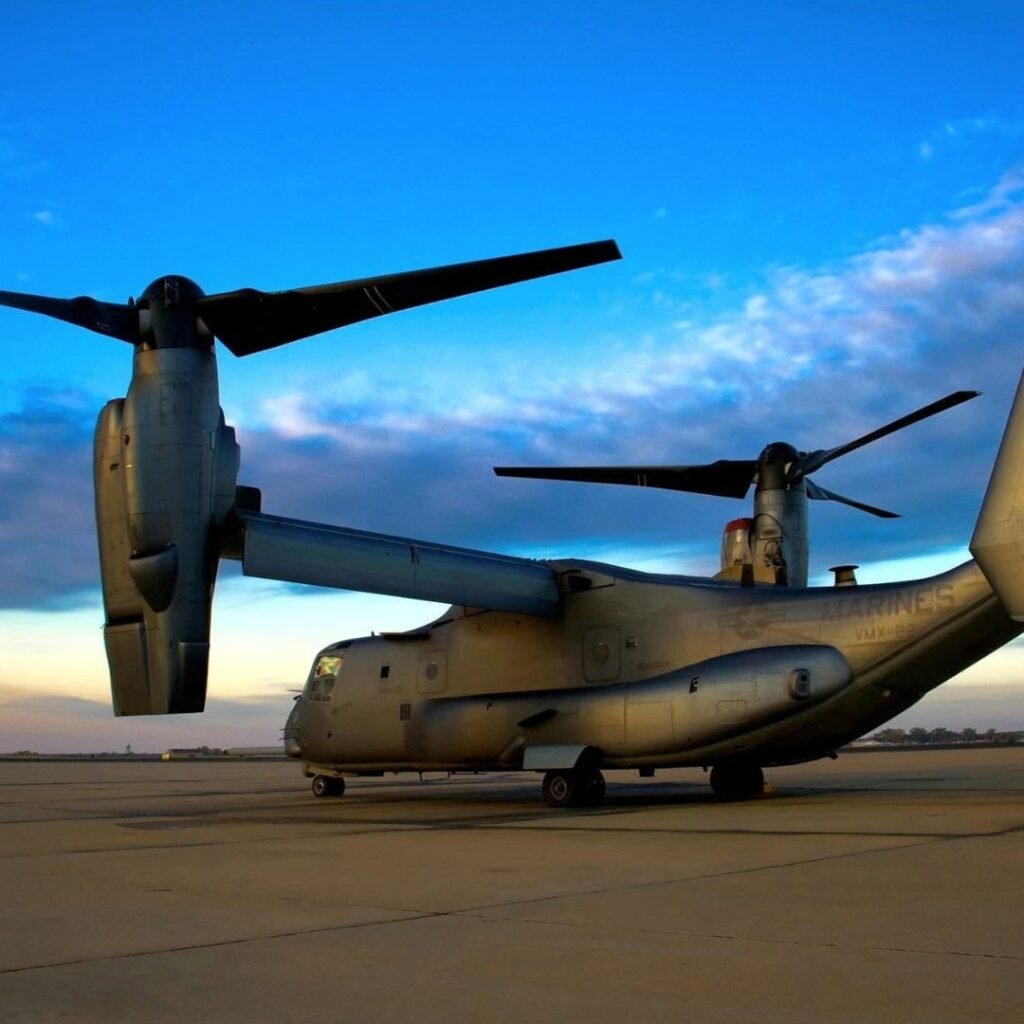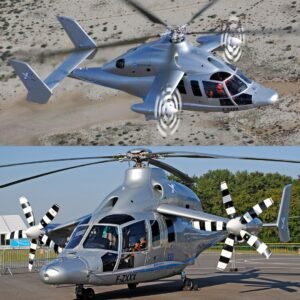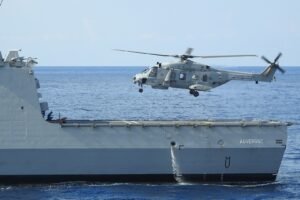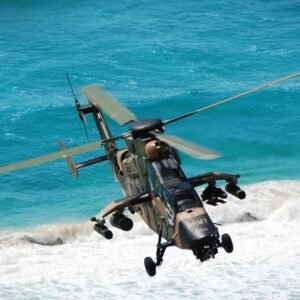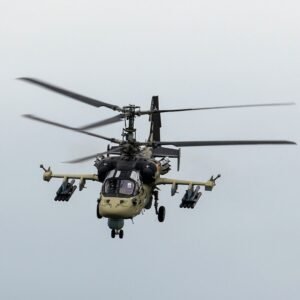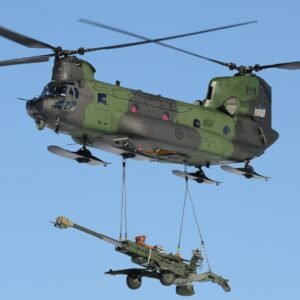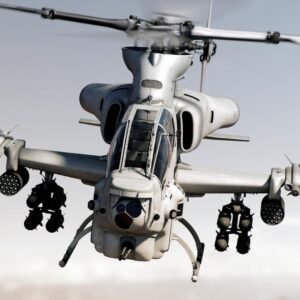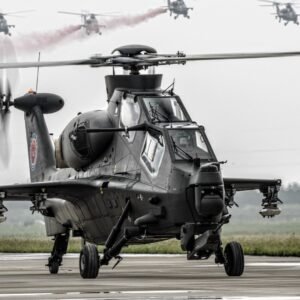Introduction
The Bell Boeing V22 Osprey is a unique aircraft that has changed the way military operations are carried out. The V-22 combines the vertical takeoff and landing capabilities of a helicopter with the speed and range of a fixed-wing aircraft. This revolutionary design has made the V-22 a game-changer for the military. It has set a new standard for multi-role aircraft.
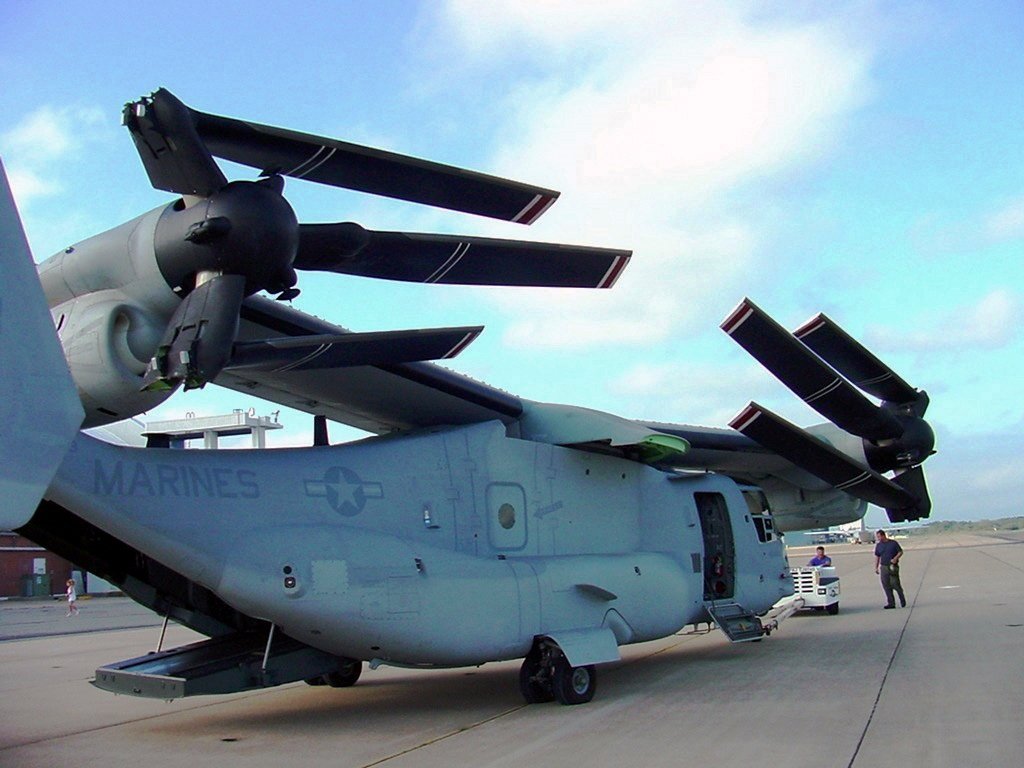
Operation History of The Bell Boeing V-22 Osprey
The Bell Boeing V22 Osprey is a multi-mission tiltrotor aircraft that has been in service with the U.S. military since 2007. Since its introduction, the V-22 Osprey has been used in a variety of missions, including transport, special operations, and combat support. We will take a closer look at the operational history of the V-22 Osprey.

- Operation Iraqi Freedom (OIF)-The V-22 Osprey was first deployed in combat operations during Operation Iraqi Freedom (OIF) in 2007. During OIF, the V-22 was used to transport personnel and equipment, as well as to support ground troops in combat operations. The V-22’s unique tiltrotor design allowed it to take off and land like a helicopter. It also provides the speed and range of a fixed-wing aircraft.
- Operation Enduring Freedom (OEF)– The V-22 Osprey was also deployed in combat operations during Operation Enduring Freedom (OEF) in Afghanistan. During OEF, the V-22 was used to transport personnel and equipment, as well as to support ground troops in combat operations. The V-22’s tiltrotor design allowed it to operate in difficult terrain and reach remote areas, making it a valuable asset for U.S. and coalition forces.

- Other Operations-The V-22 Osprey has been used in a variety of other operations. It also includes disaster relief, humanitarian aid, and search and rescue missions. The V-22’s versatility and capability have made it a valuable asset for the U.S. military and its allies, and it has proven to be a reliable and effective platform in a range of different missions.
Controversy and Criticism
A. Cost-The V-22 Osprey has faced criticism for its high cost, hindering its adoption by other nations and military organizations.
B. Safety Concerns-There have been concerns about the safety of the V-22 Osprey, particularly regarding its tiltrotor design. However, extensive testing and modifications have addressed these issues, and the aircraft has been deemed safe for military use.
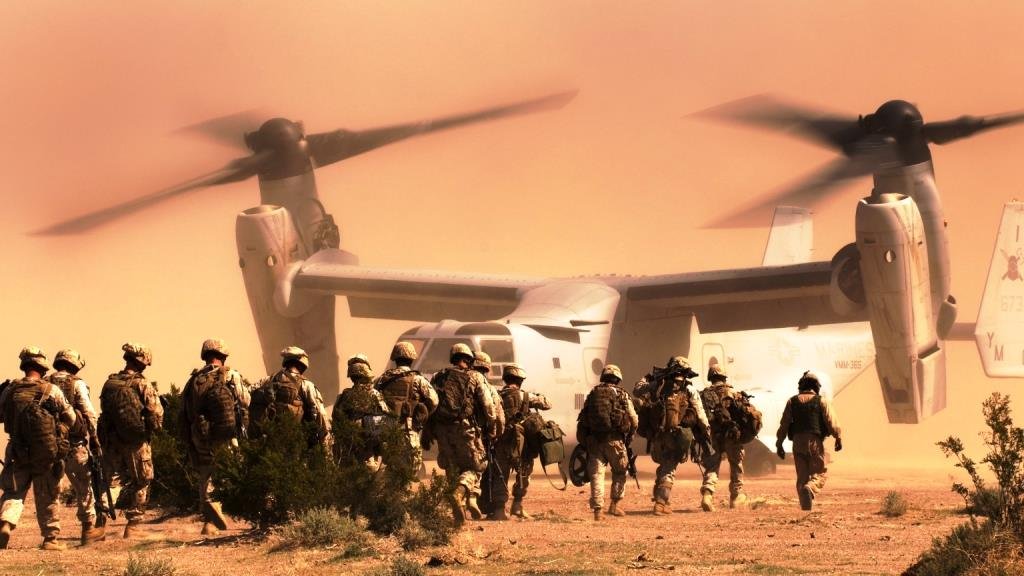
What are The Features and Specifications of “The Bell Boeing V22”?
The Bell Boeing V22 Specification
- Length:19.76 m
- Wingspan: 25.76 m
- Height: 6.88 m
- Maximum speed: 443 km/h
- Range: 3,889 km
- Service ceiling: 7,925 m
- Maximum take-off weight: 23,964 kg
- Payload capacity: 7,257 kg
- Passenger capacity: 24 troops or 20 litters (stretchers)
- Fuel capacity: 4,000 L

Design
The Bell Boeing V22 is a tiltrotor aircraft that features two large rotors mounted on tiltable nacelles. When the nacelles are in the vertical position, the aircraft can take off and land vertically like a helicopter. In flight, the nacelles tilt forward, and the aircraft operates as a turboprop airplane. The V-22’s innovative design allows it to perform missions that were previously impossible with traditional aircraft.
Performance
The Bell Boeing V22’s speed and range make it a valuable asset for military operations. It can fly faster and farther than a helicopter, providing increased mobility and flexibility for troops. The V-22’s unique design also enables it to perform a variety of missions, including combat assaults, search and rescue, and troop transport.

Capabilities
The Bell Boeing V22’s ability to take off and land vertically has proven to be a major advantage in combat operations. It allows troops to be inserted into and extracted from areas that are otherwise inaccessible. The V-22’s speed and range also make it ideal for long-range reconnaissance and surveillance missions, as well as for transporting supplies and personnel.
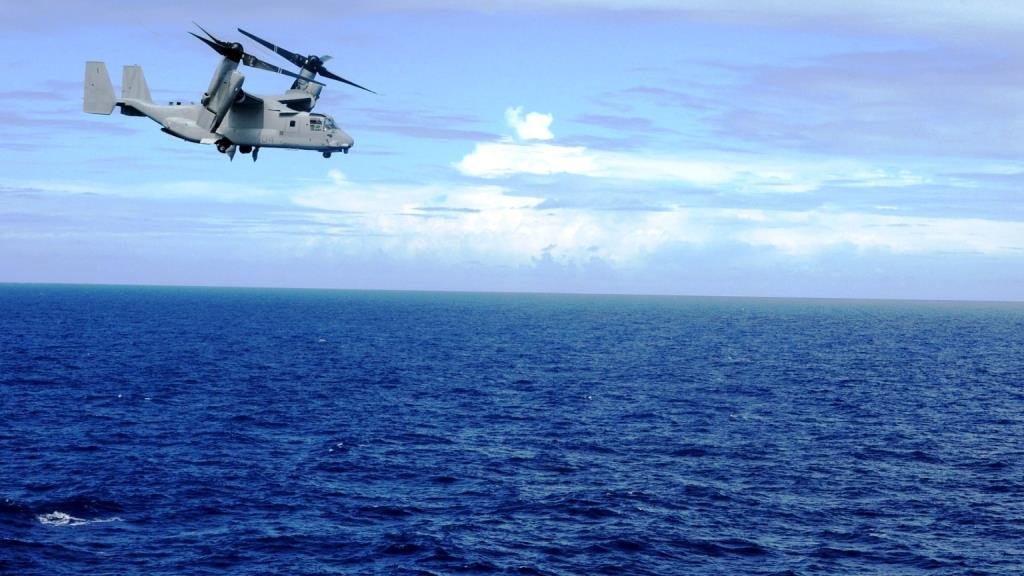
Versatility
The V-22 has been used by multiple branches of the U.S. military, including the Air Force, the Navy, and the Marines. The aircraft’s versatility has made it a valuable asset for a variety of missions, from combat operations to humanitarian aid. The V-22 has also been used for special operations, such as reconnaissance, transport, and evacuation.

The Bell Boeing V22 Propulsion
- Tiltrotor Design-The Bell Boeing V22’s unique tiltrotor design is a key aspect of its propulsion system. The tiltrotor design allows the aircraft to take off and land like a helicopter, while also being able to fly like a fixed-wing aircraft. The rotors are mounted on tiltrotors, which are hinged at the engine nacelle, and can be rotated to change the aircraft’s mode of flight.
- Rolls-Royce Allison T406 Turboshaft Engines-The V-22 is powered by two Rolls-Royce Allison T406 turboshaft engines. These engines are designed specifically for the V-22 and provide the power required for the aircraft to take off and land vertically, as well as to fly efficiently at high speeds. The T406 engines are equipped with full authority digital engine controls (FADEC) and provide a power output of 6,150 SHP each.
- Engine Performance-The T406 engines provide the V-22 with exceptional performance and efficiency. The engines are capable of producing a maximum power output of 6,150 SHP, which allows the aircraft to reach speeds of up to 275 knots (316 mph). The engines are also highly fuel-efficient, which helps to extend the aircraft’s range and endurance.
- Engine Reliability-The T406 engines are highly reliable, which is an important factor for a military aircraft. The engines are equipped with full authority digital engine controls (FADEC), which help to improve reliability and reduce maintenance requirements. The engines also have a low rate of unscheduled maintenance, which helps to ensure that the V-22 is always ready for action.
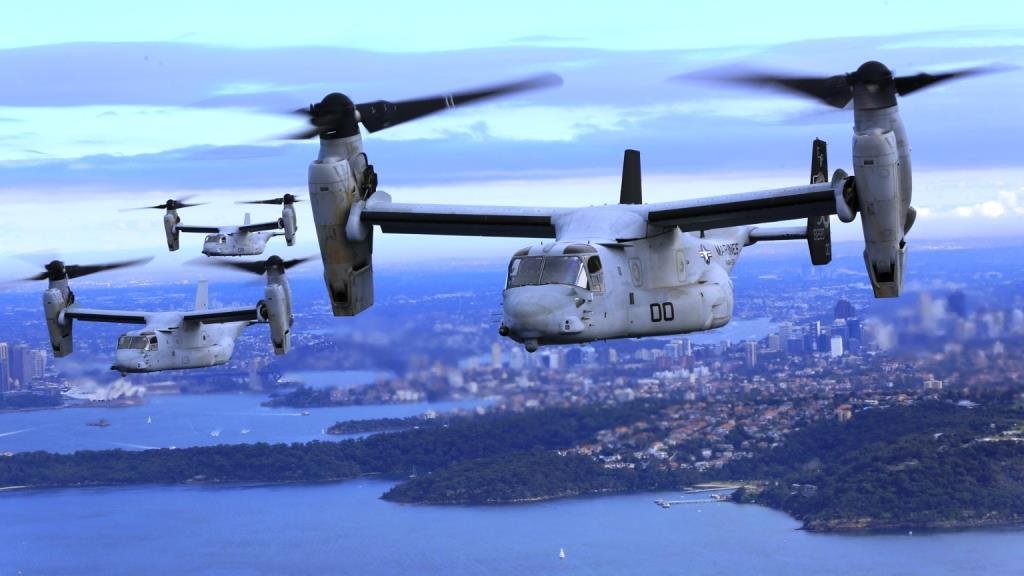
Avionics System
The Bell Boeing V22 is equipped with a state-of-the-art avionics system. It provides the crew with enhanced situational awareness and navigation capabilities. The avionics system includes a digital map display, a moving map display, and a heads-up display (HUD). The digital map display and moving map display provide the crew with real-time information about the aircraft’s position, altitude, and flight path, while the HUD provides critical flight information directly in the crew’s line of sight.
Communication Systems
The Bell Boeing V22 is equipped with a range of communication systems that provide the crew with enhanced communication capabilities. The communication systems include a secure voice and data communication system, an intercom system, and a public address system. The secure voice and data communication system provides the crew with a secure and encrypted communication link, while the intercom system allows the crew to communicate with each other within the aircraft. The public address system is used to broadcast announcements and messages to passengers or crew.

Sensors
The Bell Boeing V22 is equipped with a range of sensors that provide the crew with enhanced situational awareness. These sensors include an electro-optical/infrared (EO/IR) sensor, a weather radar, and a terrain-following radar. The EO/IR sensor provides the crew with real-time images of the surrounding area. The weather radar allows the crew to detect and avoid adverse weather conditions. The terrain-following radar provides the crew with information about the terrain ahead, allowing the aircraft to fly at low altitudes and avoid obstacles.
Armament

- Weapons Pods-The V-22 is equipped with two weapons pods, one located on each wing, that can be armed with a range of weapons. The weapons pods can be armed with 7.62mm machine guns, 50 caliber machine guns, and 2.75-inch rockets. The 7.62mm and 50 caliber machine guns are used for close air support and armed reconnaissance missions, while the 2.75-inch rockets are used to provide the aircraft with a standoff capability.
- Hardpoints-The V-22 is equipped with four hardpoints that can be used to carry a range of weapons. The hardpoints can be used to carry a variety of weapons, including air-to-air missiles, air-to-ground missiles, and bombs. Air-to-air missiles provide the aircraft with the capability to engage enemy aircraft, while air-to-ground missiles and bombs are used to attack enemy ground positions.
- Electronic Warfare Systems-The V-22 is also equipped with a range of electronic warfare (EW) systems that provide the aircraft with the capability to conduct electronic attacks and electronic protection missions. The EW systems include a radar warning receiver, a laser warning receiver, and a missile warning system. These systems provide the crew with real-time information about potential threats, allowing them to take evasive action and defend the aircraft.
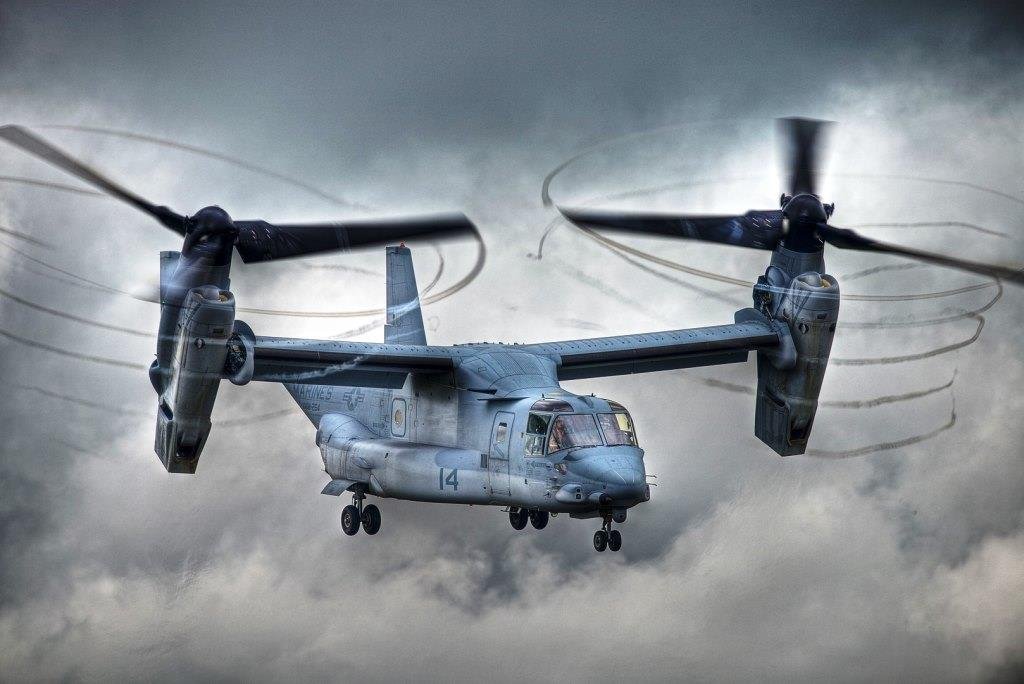
What are The Prototypes of the Bell Boeing V 22?
The Bell Boeing V22 Osprey is a multi-mission tiltrotor aircraft that has been developed through several prototypes over the years. The V-22 program began in the 1980s, and several prototypes have been developed and tested to perfect the aircraft’s design and capabilities. In this article, we will take a closer look at the prototypes of the Bell Boeing V22 Osprey.
- XV-15-The first prototype of the V-22 program was the XV-15, which was developed in the 1980s. The XV-15 was designed to test the concept of a tiltrotor aircraft. The aircraft was used to demonstrate the feasibility of this type of aircraft. The XV-15 was equipped with tilt rotors that could rotate 90 degrees, allowing it to take off and land like a helicopter but fly like an airplane.
- YV-22-The YV-22 was the next prototype developed in the V-22 program. This prototype was developed as a technology demonstration platform and was used to prove the capabilities of the tiltrotor concept. The YV-22 was equipped with advanced avionics and propulsion systems. It was used to conduct a range of tests to validate the performance of the tiltrotor design.
- MV-22-The MV-22 was the first production-ready prototype of the V-22 Osprey. This prototype was designed to meet the requirements of the U.S. military. It was equipped with advanced avionics, propulsion systems, and armament systems. The MV-22 was the first V-22 variant to be put into production and has been used by the U.S. Marine Corps for a range of missions, including transport, assault support, and special operations.
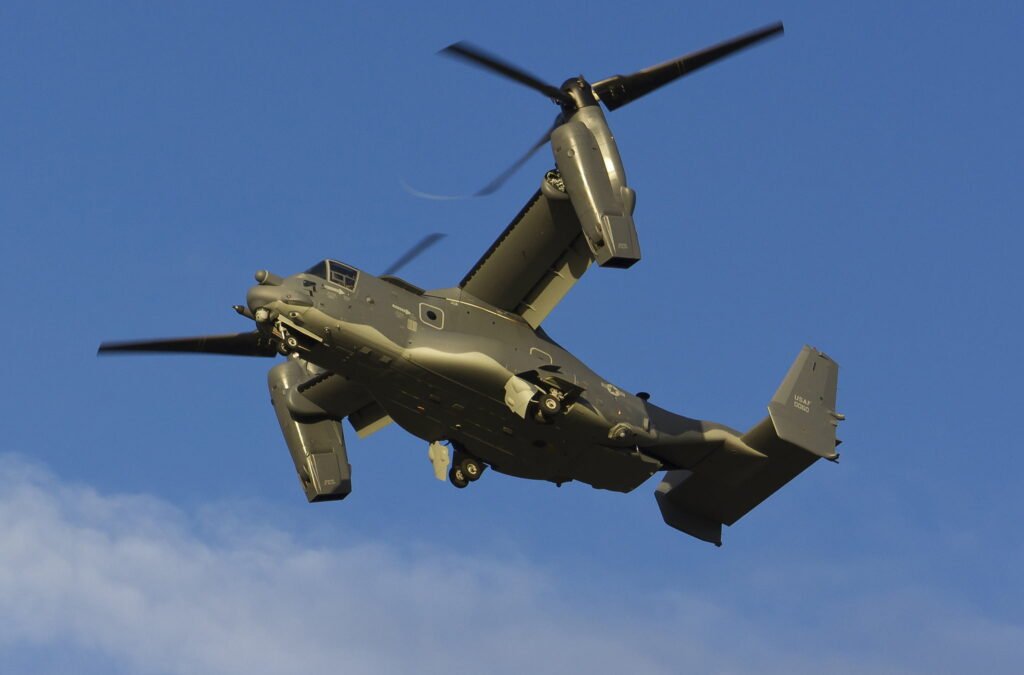
What are The Variants of The Bell Boeing V 22?
The Bell Boeing V22 Osprey is a multi-mission tiltrotor aircraft. It has been developed in several different variants to meet the needs of various military and civilian customers. Each variant offers different capabilities, avionics, and armament systems. In this article, we will take a closer look at the various variants of the V-22 Osprey.
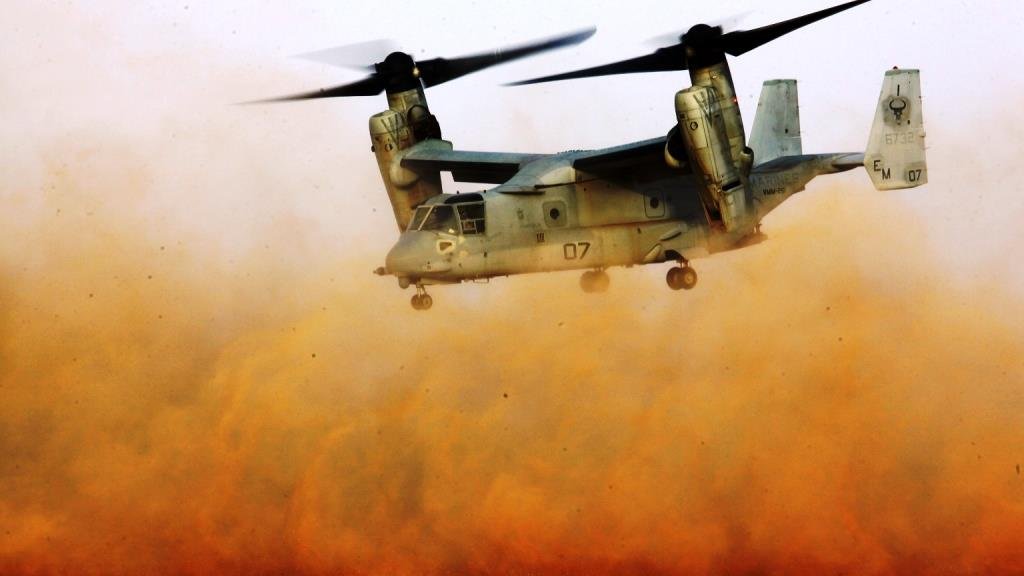
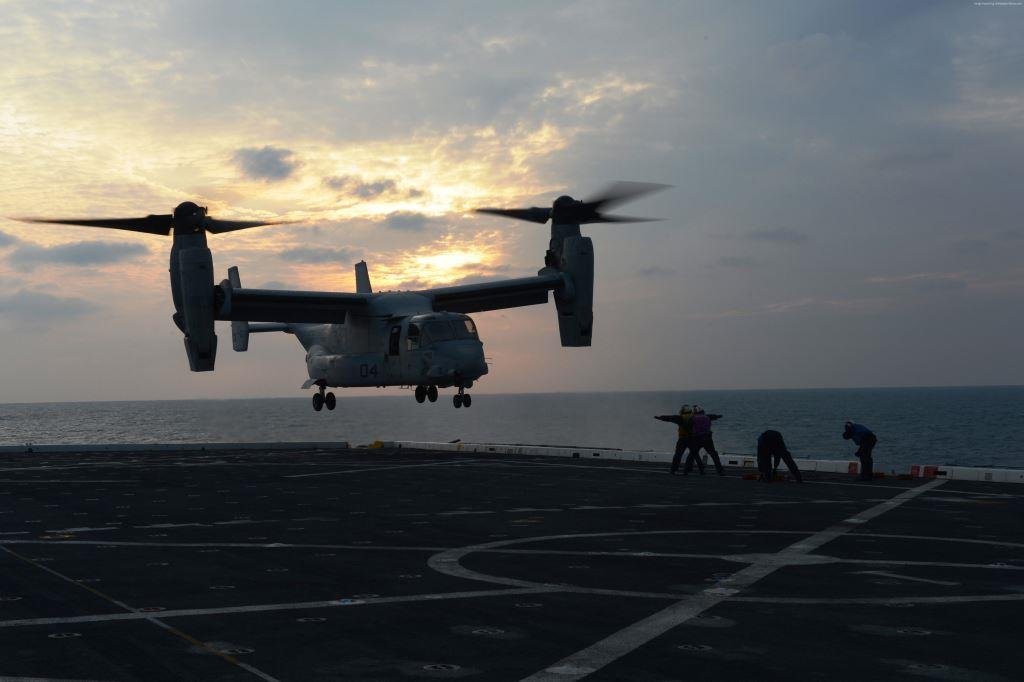
- MV-22-The MV-22 is the standard variant of the V-22 Osprey and is used by the U.S. Marine Corps for a range of missions, including transport, assault support, and special operations. The MV-22 is equipped with advanced avionics and propulsion systems. The armament systems are supporting ground troops and engage in air-to-air combat if necessary.
- CV-22-The CV-22 is a variant of the V-22 Osprey used by the U.S. Air Force Special Operations Command (AFSOC). The CV-22 is equipped with advanced avionics and navigation systems, as well as enhanced communications and self-defense systems, making it well-suited for special operations missions such as long-range reconnaissance and the insertion/extraction of special operations forces.
- HV-22-The HV-22 is a variant of the V-22 Osprey designed for use by the U.S. Navy. The HV-22 is equipped with advanced avionics and navigation systems, as well as enhanced communications and self-defense systems, making it well-suited for missions such as search and rescue, humanitarian aid, and logistics support.
- CV-22B-The CV-22B is an upgraded variant of the CV-22, designed to improve its capabilities for special operations missions. The CV-22B features improved avionics, navigation systems, and self-defense systems, as well as increased fuel efficiency and increased range compared to the original CV-22.
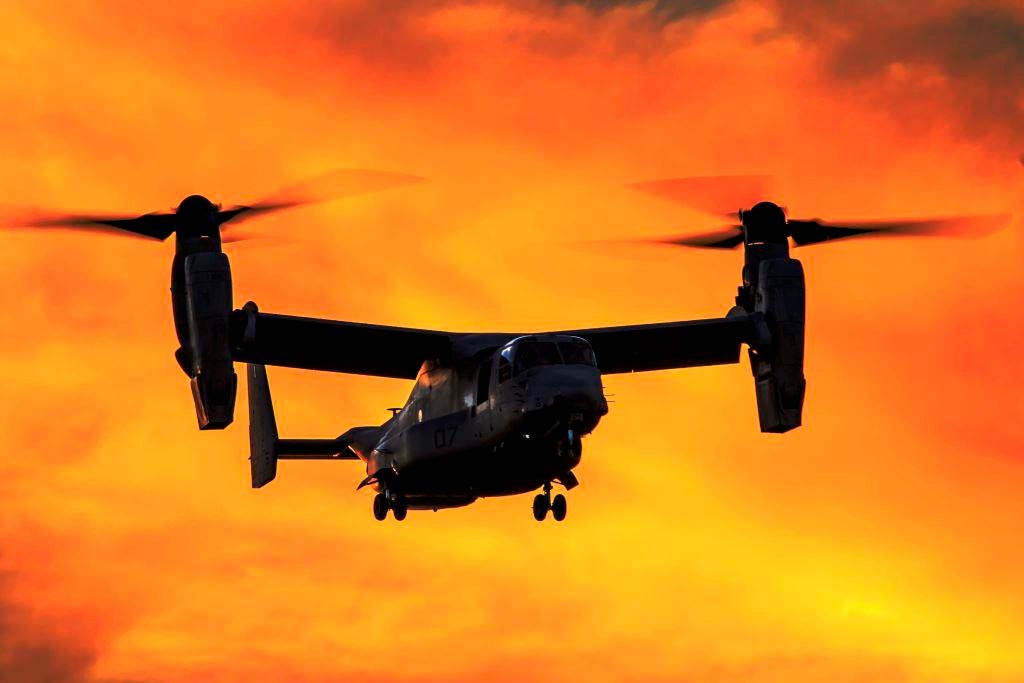
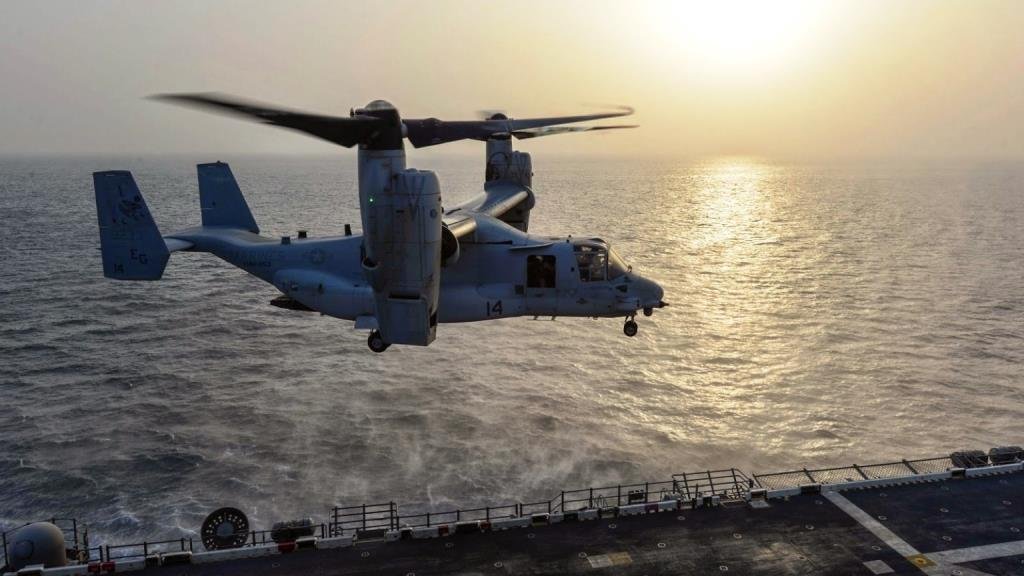
Do you know about Sikorsky UH60 Blackhawk Helicopter – is the Sky Defender.
Read about the previous blog – Apache Boeing AH 64

